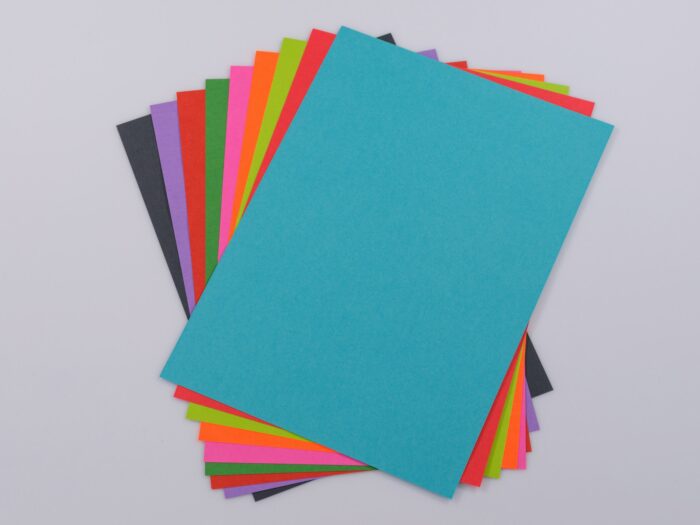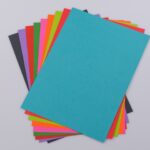There appear to be few consistent empirical demonstrations of the idea that studying materials printed on yellow paper are easier to recall than those printed on white paper, however there is evidence that warm colours (like yellow, orange and red) elicit more arousal than cool colours (like brown, grey and green). For instance, Greene et al. (1983 Bulletin of the Psychonomic Society) found that subjects placed in environments coloured yellow, self-reported more subjective arousal than those placed in gray, blue, green, white, brown, pink, orange, or red environments.

Photo by engin akyurt on Unsplash.
Wilson (1966 Perceptual and Motor Skills) found that when subjects viewed a warmer colour, their objective, physiological arousal, which was measured by skin conductance and galvanic skin response, was also higher. See also Jacobs and Hustmyer (1974 Perceptual and Motor Skills), Levy (1984 American Journal of Art Therapy), and O’Connell et al. (1985 Perceptual and Motor Skills) for related findings using additional colours and measures (though generally favouring red more than yellow as far as arousal is concerned). Furthermore, others have shown that more arousing events are better remembered (Wolters & Goudsmit, 2005 Psychological Reports; Otani et al., 2007 Journal of General Psychology).
Moreover, colour on its own does seem to promote memory, in that recognition is higher for coloured than grayscale images (Spence et al., 2006 Psychological Science). (Thanks to the unpublished Huchendorf, 2007 UW-L Journal of Undergraduate Research for these references.) All this is consistent with the closest evidence known to us for an academic benefit of yellow paper: Jacobs and Blandino (1992 Perceptual & Motor Skills), who found better exam performance among students given exams on red or yellow paper, rather than white, blue, or green paper (as cited in Martinez et al., 2010 American Journal of Psychological Research). However, later studies also cited by Martinez et al. (2010) found better exam performance among students given exams on blue rather than red paper (Sinclair et al., 1998 Teaching of Psychology) or on white, blue, or green paper rather than red or yellow paper (Skinner, 2006 Teaching of Psychology). In addition, colours like red have been suggested to increase anxiety in a variety of contexts and thereby negatively affect achievement: Elliot & Maier (2007 Current Directions in Psychological Science), Hagemann et al. (2008 Psychological Science), and Ilie et al. (2008 Cyberpsychology & Behavior). Not only are these results in conflict with each other, but they also do not speak to the effect of paper colour on studying rather than test performance.
Tags: memory, reading, writingCategorised in: Uncategorized
This post was written by Allison Wong
